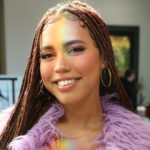“The Jeffersons” wasn’t just a sitcom; it was a cultural phenomenon, spinning off from “All in the Family” and quickly becoming a staple of 1970s television. At the heart of its charm was George Jefferson, played masterfully by Sherman Hemsley. And while his sharp wit and entrepreneurial spirit were key to the show’s success, it was the George Jefferson Dance that truly cemented his iconic status. Let’s break down why this seemingly simple set of moves became so unforgettable and culturally significant.
One of the most humorous aspects of the scene featuring the George Jefferson dance is the over-the-top setting. The original article hilariously points out the 1970s’ bizarre idea of a “fancy party.” Imagine attending a “sophisticated soiree” only to find yourself in a cramped living room, surrounded by people in full ballroom attire, serenaded by an electronic accordion. It’s a far cry from today’s expectations of elegance, and this comical juxtaposition perfectly sets the stage for George Jefferson’s equally unconventional dance moves. This element of unexpected humor is quintessential “The Jeffersons.”
Adding to the delightfully dated ambiance, the original article playfully mentions the tacky velvet painting behind George. It’s details like these – the velvet Elvis, the giant wooden spoon and fork décor seemingly mandatory in 70s kitchens – that instantly transport viewers back in time. These visual cues are not just set dressing; they’re cultural touchstones that enhance the comedic and nostalgic appeal of “The Jeffersons,” making the setting as much a character as George himself.
The dynamic between George and Helen, another party guest, is another layer of comedic gold in this scene. The original article cleverly draws a parallel to Martin and Pam from the 90s sitcom “Martin,” recognizing George and Helen as comedic predecessors. Their playful antagonism, filled with side-eyes and witty jabs (“shorty!”), is a classic sitcom trope done exceptionally well. This banter, delivered with perfect comedic timing, highlights the brilliance of the writing and the actors’ chemistry, adding depth to the scene beyond just the George Jefferson dance.
And then there’s Sherman Hemsley himself. The original article rightly argues for Hemsley’s place among TV comedy legends. While names like Cosby (with a necessary pause for reflection), Foxx, and Seinfeld are often mentioned, Hemsley’s comedic genius is sometimes overlooked. His mastery of the comedic pause is on full display in the dance scene. When Helen invites him to dance, the beat of silence before he responds is comedic perfection. It builds anticipation and allows the audience to fully appreciate the humor about to unfold with the George Jefferson dance.
Finally, we arrive at the dance itself. Whether you call it “The Slop” or “The Funky Chicken,” the George Jefferson dance transcends mere steps. As the original article eloquently puts it, it’s “black soul in motion – a pure expression of freedom and anger exploding on mainstream TV.” In the 1970s, seeing a Black man on television unapologetically expressing himself, without concern for white societal expectations, was revolutionary. This dance wasn’t just funny; it was a powerful statement of self-expression and cultural pride, making it so much more than just a dance – it was a cultural moment. The George Jefferson dance embodies the spirit of the show and the character, ensuring its place in television history.

